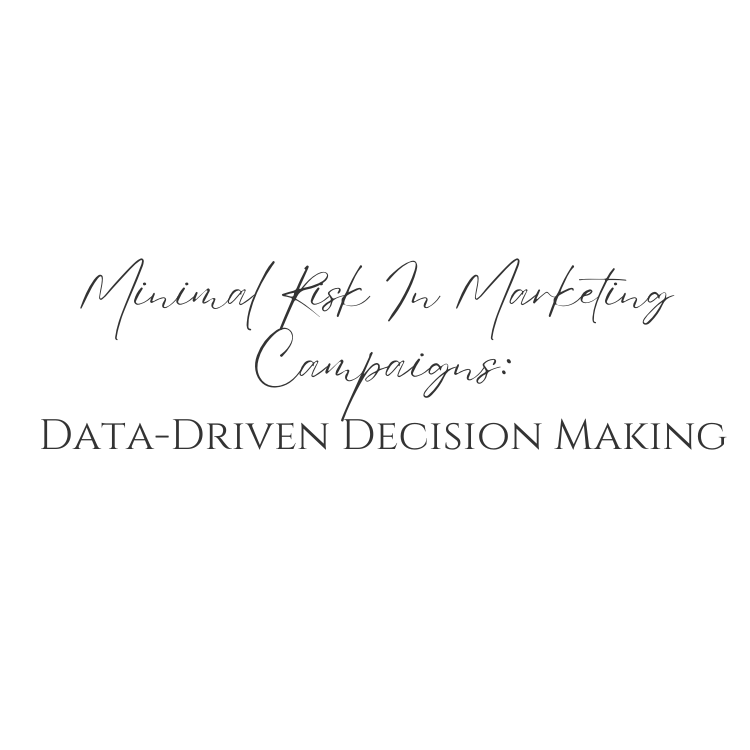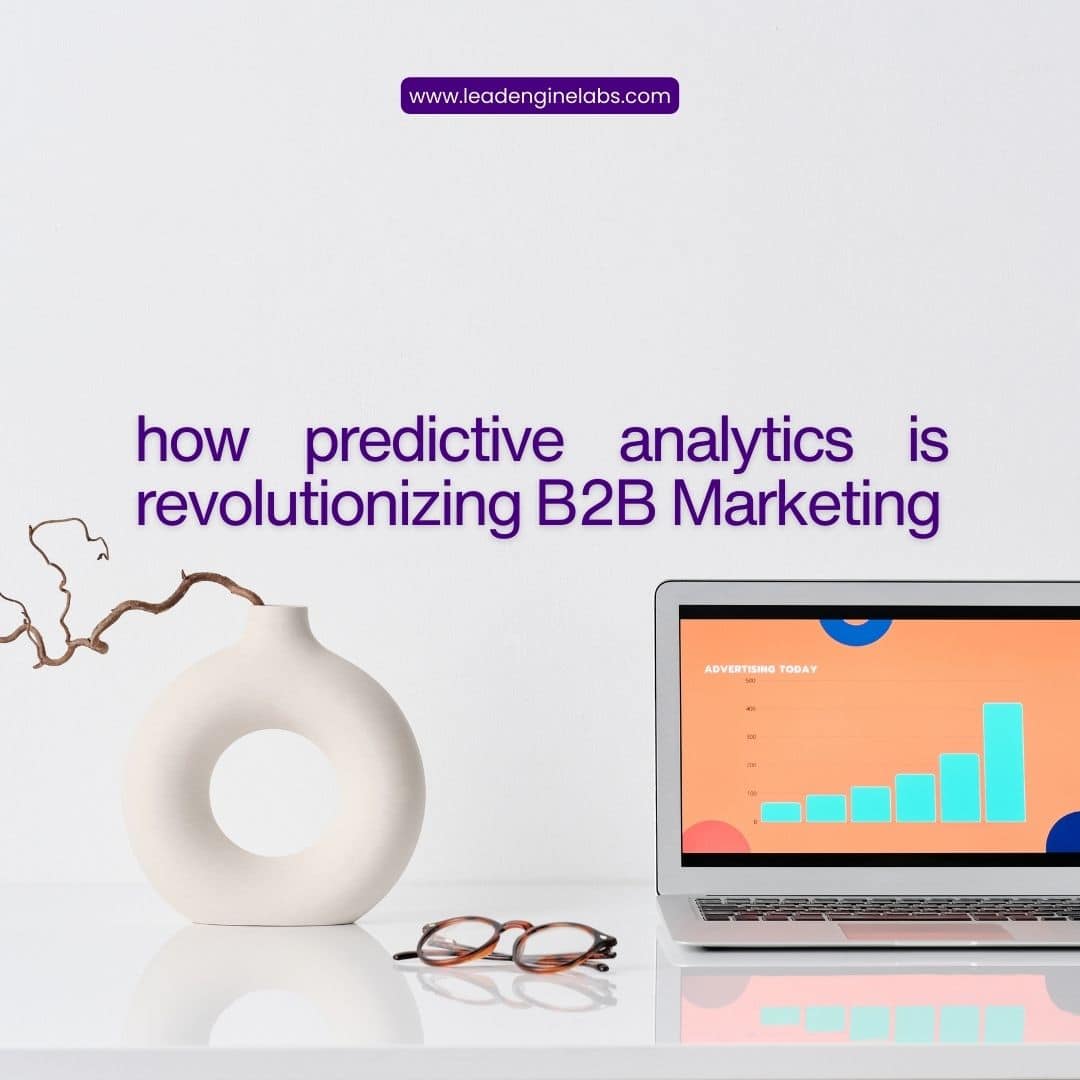You know that feeling when you launch a marketing campaign and cross your fingers, hoping it will be successful? It’s a risky move. But what if we told you there was a way to minimize that risk?

By using data-driven decision making, you can create marketing campaigns with minimal risk. Data-driven decision making involves analyzing consumer behavior, studying market trends, evaluating past campaign performance, and creating a plan based on all of this information. By implementing this plan and continuously monitoring results, you can make informed decisions that are more likely to lead to success.
So why take unnecessary risks when you can use data to guide your marketing efforts? In this article, we’ll explore the concept of minimal risk marketing and how data-driven decision making can help you achieve your goals while minimizing the risks associated with traditional marketing approaches.
Key Takeaways
- Understanding consumer risk perception is crucial in minimal risk marketing.
- Analyzing consumer behavior and market trends can inform successful marketing strategies.
- Evaluating past campaign performance can provide valuable insights for future strategies.
- Data-driven decision making involves analyzing consumer behavior, studying market trends, and evaluating past campaign performance.
Understanding the Concept of Minimal Risk Marketing Campaigns
Don’t let fear hold you back – learn how minimal risk marketing can help your business thrive!

Risk management strategies are essential to any business, but the perception of risk by consumers can impact the success of your marketing campaigns.
Minimal risk marketing is a data-driven approach that can help mitigate consumer concerns and increase the effectiveness of your strategy.
One key aspect of minimal risk marketing is understanding consumer risk perception. This involves analyzing the potential risks associated with your product or service and identifying ways to minimize those risks for consumers. By addressing these concerns upfront, you can build trust with your audience and create a more positive perception of your brand.
Another important component of minimal risk marketing is using data-driven decision making to inform your strategy. By collecting and analyzing data on consumer behavior, you can identify patterns and preferences that will help you tailor your messaging and delivery channels to better resonate with your target audience. This approach not only minimizes risk, but also increases the likelihood of success for each campaign.
Analyzing consumer behavior is just one step in creating a successful minimal risk marketing campaign. But by incorporating this approach into all aspects of your strategy, from product development to advertising, you can build a stronger brand that resonates with consumers and drives growth for years to come.
Analyzing Consumer Behavior
Understanding how consumers behave is crucial in creating successful marketing strategies that connect with them on an emotional level. Psychological factors play a significant role in determining the purchase patterns of consumers. Marketers must understand these factors and use them to their advantage when designing campaigns.

One way to analyze consumer behavior is through the use of data-driven decision making. By collecting and analyzing data, marketers can gain valuable insights into consumer preferences and tendencies. For example, a marketer might look at past purchasing trends to determine which products are most popular among certain demographics.
To evoke emotion in your audience, consider using a table that compares different psychological factors and their corresponding purchase patterns. In one column, list common psychological factors such as fear, joy, or excitement. In the other column, list specific products or services that tend to be associated with those emotions. This will help you better understand how emotion influences purchasing decisions.
By studying market trends and understanding consumer behavior, marketers can create effective campaigns that minimize risk and maximize impact. The next section will explore some key strategies for studying market trends and using this information to make informed decisions about marketing efforts.
Studying Market Trends
To stay ahead of the competition and make informed decisions about your marketing efforts, you need to keep a close eye on market trends. Market research techniques can help you identify these trends and use them to your advantage.

One useful strategy is conducting surveys to gather insights from your target audience. You can also analyze data from social media platforms or industry publications to spot emerging patterns.
Competitive analysis strategies are another vital tool in studying market trends. By evaluating the strengths and weaknesses of your competitors, you can gain valuable insights into what’s working in your industry and where there may be opportunities for growth. This type of analysis involves researching competitors’ product offerings, messaging, pricing strategies, and customer feedback.
By using market research techniques and competitive analysis strategies, you can take a data-driven approach to understanding current market trends. Armed with this knowledge, you’ll be better equipped to develop effective marketing campaigns that resonate with your target audience.
In the next section, we’ll explore how evaluating past campaign performance can help you further refine your marketing strategy.
Evaluating Past Campaign Performance
You’ve already put in the hard work of creating marketing campaigns, so now it’s time to take a closer look and evaluate past campaign performance. This involves comparing metrics such as click-through rates, conversion rates, and overall return on investment (ROI) for each campaign. By analyzing this data, you can identify patterns and gain insights into what worked well and what didn’t.
Comparing metrics is an essential part of evaluating past campaign performance. For example, let’s say you ran two email campaigns with different subject lines. Comparing their open rates can help determine which subject line was more effective in capturing your audience’s attention. Additionally, comparing conversion rates between two ad sets can help you understand which messaging resonated better with your target audience.
Identifying patterns is also crucial when evaluating past campaign performance. By looking at trends across multiple campaigns or channels, you can see which tactics consistently perform well and which ones may need improvement. These insights are valuable in shaping future marketing strategies that are based on data-driven decision making rather than guesswork or assumptions about what might work best.
By evaluating past campaign performance using data-driven methods such as comparing metrics and identifying patterns, you can gain valuable insights that will inform your future marketing strategies.
Next up: creating a data-driven marketing plan that incorporates these learnings for minimal risk in your next campaign decisions!
Creating a Data-Driven Marketing Plan
Now that we’ve evaluated past campaign performance, let’s dive into creating a marketing plan that uses data to drive success.
You can start by gathering data on your target audience through customer segmentation strategies. This means dividing your audience into smaller groups based on demographics, behavior patterns, and other relevant factors. By doing this, you can tailor your messaging and offers to each group, resulting in more personalized and effective campaigns.
Next, it’s important to use data analytics tools to measure the success of your campaigns. These tools can help you track website traffic, click-through rates, social media engagement, and other metrics that give insight into how well your marketing efforts are performing. With this information at hand, you can make informed decisions about what changes need to be made to improve future campaigns.
Don’t forget about the importance of testing and refining your marketing plan over time. A successful data-driven campaign is not a one-time event but an ongoing process of experimentation and improvement. By continuously analyzing results and making adjustments accordingly, you can ensure that your marketing efforts are always moving towards optimal performance.
As you begin implementing the plan created through the use of data analytics tools and customer segmentation strategies outlined above, keep in mind that there may be challenges along the way. However, with a commitment to innovation and a willingness to adapt as needed based on analysis of real-time results, you will be well-positioned for long-term success in achieving minimal risk when it comes to executing effective marketing campaigns.
Implementing the Plan
As you move forward with implementation, it’s essential to remain flexible and open-minded in the face of any unexpected obstacles that may arise. Project management is crucial during this phase, and it’s vital to have a detailed plan in place that outlines all necessary steps and timelines.
Be sure to allocate resources effectively, taking into account both budget constraints and staffing needs. To ensure success, data-driven decision making should be at the forefront of your mind throughout the implementation process. This means utilizing analytics tools to track progress, identify areas for improvement, and adjust strategies as needed based on real-time data.
Don’t be afraid to pivot if something isn’t working – being agile is key when implementing a marketing plan. Remember that successful implementation isn’t just about following a set plan – it’s also about staying focused on your overall goals while remaining responsive to the market landscape.
Keep an eye on industry trends and competitor activity so that you can adjust your approach accordingly. By prioritizing project management, resource allocation, and data-driven decision making during implementation, you’ll be well-equipped to monitor and measure results effectively in order to optimize your outcomes moving forward.
Monitoring and Measuring Results
To effectively monitor and measure the results of your marketing plan, it’s important to regularly analyze key performance indicators such as website traffic, conversion rates, and customer feedback. Real-time tracking can help you keep up with changes in these metrics and adjust your strategy accordingly.
Additionally, A/B testing can provide valuable insights into which tactics are most effective for reaching your target audience. By consistently monitoring your KPIs, you’ll be able to identify areas where your marketing plan may be falling short and make adjustments before it’s too late.
For example, if you notice that website traffic is declining or bounce rates are high on certain pages, you can review the content and user experience to see if there are any improvements that could be made. Similarly, by analyzing customer feedback, you can gain a better understanding of what they like about your brand and what could be improved.
Ultimately, using data-driven decision making will allow you to continuously improve your marketing campaigns over time. By incorporating real-time tracking and A/B testing into your strategy, you’ll have access to valuable insights that can inform future campaigns.
As you measure the success of each campaign iteration against the KPIs established in the planning phase, you’ll be able to refine your approach and drive even greater results in the long run.
Continuous Improvement
As a marketer, continuous improvement should always be on your mind. Learning from experience is essential to stay ahead of the competition and maintain success.
By analyzing data and making data-driven decisions, you can constantly evaluate the effectiveness of your marketing campaigns. This allows you to make adjustments and improve results.
Overall, prioritizing continuous improvement is crucial in the fast-paced world of marketing. It can help you stay relevant and successful in the long run.
Learning from Experience
You can gain valuable insights and improve your marketing strategy by analyzing past campaign performance. Reflection techniques, such as case studies, allow you to identify what worked well and what didn’t. This helps you make data-driven decisions for future campaigns.
By examining the data from previous campaigns, you can learn about consumer behavior, target audience preferences, and overall market trends. Analyzing past campaigns also allows you to continuously improve and adapt your marketing strategy.
By identifying successful tactics, you can incorporate them into future campaigns while avoiding those that did not yield positive results. This type of learning from experience helps ensure that your marketing efforts remain effective and relevant in a constantly changing market.
As you strive to stay ahead of the competition, incorporating data-driven decision making into your strategy is crucial for success.
Staying Ahead of the Competition
If you want to crush your competition and come out on top, it’s crucial that you stay ahead of the game at all times. One way to do this is through competitive intelligence, which involves gathering and analyzing information about your competitors’ products, marketing strategies, and customer base. By understanding what your competitors are doing well and where they may be falling short, you can make informed decisions about how to improve your own marketing campaigns.
Market research is another important tool for staying ahead of the competition. This involves collecting data about consumer preferences, industry trends, and other factors that can impact your marketing efforts. By conducting thorough market research, you can identify new opportunities for growth and tailor your campaigns to better meet the needs of your target audience. With these data-driven approaches in mind, you can ensure that every decision you make in your marketing campaigns is grounded in solid research and analysis – giving you a powerful advantage over the competition.
| Competitive Intelligence | Market Research | ||
|---|---|---|---|
| Gathers info on competitors | Collects data on consumers | ||
| Analyzes competitor strategies | Identifies industry trends | ||
| Helps improve own campaigns | Tailors campaigns to audience | ||
| Gives insight into market gaps | Identifies growth opportunities | ||
| Informs business strategy | Grounds decisions in analysis | Ultimately, market research helps businesses make informed decisions and stay ahead of the competition in a constantly evolving marketplace. |
Frequently Asked Questions
How do you determine the right data sources to use for a data-driven marketing plan?
To optimize your marketing plan, start by identifying data sources that align with your business objectives. Consider factors like data quality, relevance, and reliability to ensure you’re making informed decisions based on accurate insights.
What are some common mistakes that businesses make when implementing a data-driven marketing strategy?
Common mistakes businesses make in data-driven marketing include relying too heavily on vanity metrics, not properly segmenting audiences, and failing to incorporate qualitative data. To avoid these pitfalls, prioritize relevant metrics and constantly iterate based on both quantitative and qualitative feedback.
What role do marketing automation tools play in minimal risk marketing campaigns?
Marketing automation benefits data-driven decision making by streamlining repetitive tasks, increasing efficiency, and providing real-time insights. These tools enable marketers to focus on strategy and innovation while minimizing the risk of human error and maximizing ROI.
How do you measure the success of a data-driven marketing campaign?
To measure effectiveness and track metrics in a data-driven marketing campaign, you might analyze website traffic and conversion rates. For example, if you increase email click-through rates by implementing personalized content, it shows the campaign’s success.
Can minimal risk marketing be applied to all industries and businesses of any size?
Minimal risk marketing can benefit startups by reducing costs and increasing ROI. However, the applicability of this approach to niche industries may vary based on factors such as customer behavior and competition. Data-driven analysis is crucial for making informed decisions.
Conclusion
Congratulations! You’ve successfully implemented a data-driven marketing plan that minimizes risks and maximizes your chances of success.
By analyzing consumer behavior, studying market trends, and evaluating past campaign performance, you were able to create a solid plan based on facts and not just assumptions.
The implementation of the plan was seamless, thanks to your attention to detail and commitment to continuous improvement. And as you monitored and measured the results, you were thrilled to see that your efforts paid off.
Your campaign not only met but exceeded your expectations. This is what happens when you let data guide your decisions.
As you continue on this path of minimal risk marketing, remember that it’s important to stay agile and adapt to changes in the market. Keep collecting data, analyzing it, and using it to make informed decisions.
With this approach, success is not just a coincidence it’s an inevitable outcome of strategic planning and execution.




